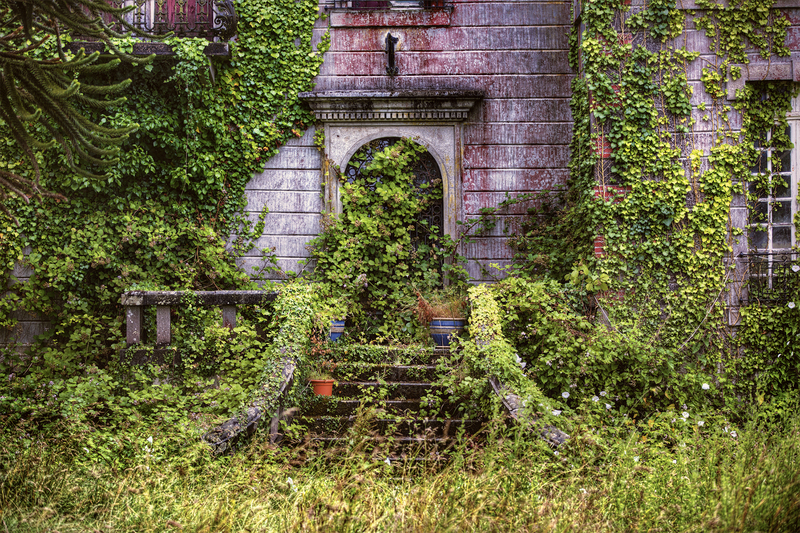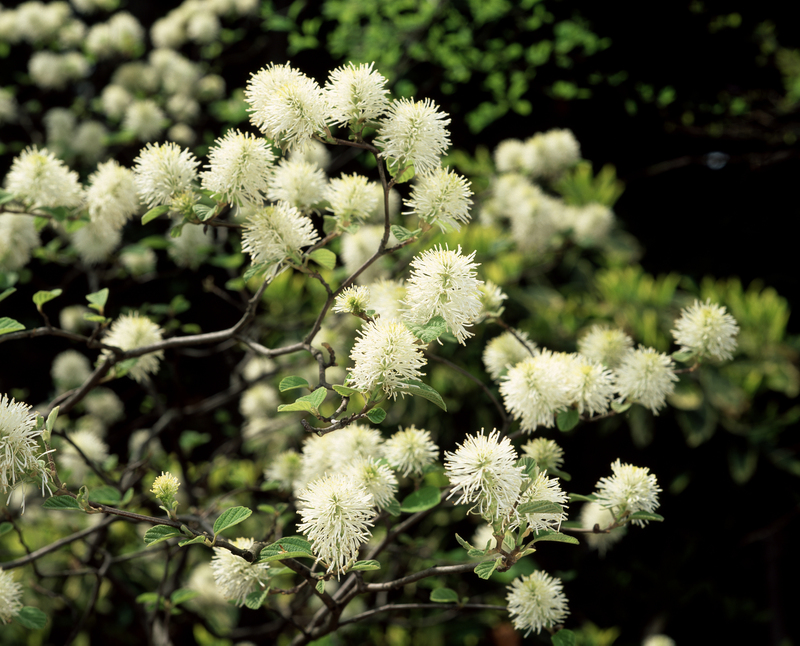Master the art of dog-friendly gardening
Posted on 16/06/2025
Master the Art of Dog-Friendly Gardening: A Complete Guide
Gardening offers immense joy, peace, and beauty to outdoor spaces, but for dog owners, it introduces unique challenges and opportunities. Dog-friendly gardening is about designing vibrant yards that are safe, stunning, and delightful for both humans and their canine companions. In this comprehensive guide, we'll take you through everything you need to know to master the art of dog-friendly gardening--from landscaping choices and safe plant selection to fortifying your garden and keeping your pets happy and healthy.
Why Embrace Dog-Friendly Gardening?
While a traditional garden can be a botanical paradise, it may also conceal hidden dangers for inquisitive pups, ranging from toxic plants to sharp objects. Dog-friendly landscaping transforms your green space into a puppy-proof haven that either eliminates or minimizes hazards and embraces the playful, curious nature of dogs.
- Enhanced safety for pets and children
- Reduced garden damage from digging and trampling
- Happier, healthier, and more stimulated pets
- Beautiful, low-maintenance landscaping

Essential Principles for a Dog-Proof Garden
Understand Your Dog's Needs and Behavior
The first step towards dog-friendly gardening is understanding your pet's habits. Some dogs love to dig, others enjoy sunbathing, while some may be natural explorers and escape artists. *Observe your dog's behavior in the yard to identify potential problem areas and features they enjoy.*
Choose Non-Toxic, Durable Plants
Many beloved garden plants can be harmful to dogs if ingested, causing symptoms ranging from drooling to life-threatening poisoning. Before planting, review a trusted list of non-toxic garden plants for dogs. Also, pick robust and resilient varieties that can withstand some canine roughhousing.
- Safe plant options: Rosemary, marigolds, snapdragons, sunflowers, thyme, and ferns
- Plants to avoid: Azaleas, lilies, foxglove, daffodils, tulips, wisteria, and yew
*Regularly inspect your garden for any volunteer or wild plants that could pose hazards to your furry friend* and remove them promptly.
Design Elements for the Ultimate Dog-Friendly Yard
Sturdy, Pup-Proof Surfaces
Dogs love to run, dig, and play. Your paths, lawns, and beds should be constructed from durable materials to withstand enthusiastic canine activity.
- Grass: Opt for tougher blends like tall fescue or Bermuda grass, which recover quickly from wear and tear.
- Mulch: Use pet-safe mulch such as cedar or pine chips. Avoid cocoa mulch, as it is toxic to dogs.
- Paths: Gravel, flagstone, or brick walkways are practical, reduce mud, and minimize paws tracking dirt inside.
Reinforce frequently-used routes--dogs tend to follow the same paths when patrolling the yard. Use these natural trails as guides for walkways and keep delicate plants away from these corridors.
Secure Fencing and Gate Solutions
Dog-safe gardens must be escape-proof. Inspect existing fences for gaps or weak spots. Consider these strategies:
- Choose a fence at least 4-6 feet tall, depending on your dog's jumping or climbing abilities.
- Bury wire or concrete base a foot below ground to deter diggers.
- Double-gate entryways for added security.
- Screen escape-prone zones with dense, thornless shrubs like boxwood or laurel.
Shaded Retreats and Water Access
Just like people, dogs need shelter and hydration. Ensure your garden includes shaded spots and fresh water:
- Adorn shady spots beneath trees or install a sturdy pergola or doghouse.
- Provide water bowls or fountains at several locations in your yard.
Keep water bowls clean to avoid attracting insects or algae.
Garden Zones: Designate Play, Rest, and No-Dog Areas
Dividing your yard into zones helps dogs recognize boundaries. This strategy protects precious flowerbeds and vegetable plots while allowing your pets a space of their own.
- Play zones: Areas with tough grass, dog agility equipment, or a sandpit for digging satisfy canine energy and instincts.
- Rest zones: Quiet nooks, shaded by trees or sails, invite relaxation.
- Restricted areas: Use low fences, raised beds, or dense borders to signal off-limit gardens. Plant deterrents, such as rosemary or strong-scented herbs, may discourage entry.
Safe and Fun Dog-Friendly Garden Features
Dog Paths and Mazes
Capitalize on your pet's natural curiosity. Create looping pathways bordered by strong, non-toxic groundcovers. These dog paths will direct your friend's energy, reducing damage to your most delicate plants.
Digging Pits
If your dog loves to dig, it's better to offer an approved spot than to fight the instinct:
- Designate a sand or dirt pit in a corner of the yard.
- Hide dog toys or treats in the area to encourage its use.
- Reward your dog for using the pit and gently discourage digging elsewhere.
Canine Sensory Zones
Enrich your dog's outdoor experience with stimulating pet-friendly scents and textures:
- Herbs: Plant containers of basil, mint, sage, or chamomile for dogs to sniff and enjoy.
- Ornamental grasses: Provide different textures for dogs to rub against or explore.
- Engaging toys and tunnels: Place in safe, fenced areas for playtime.
Raised Beds for Flower and Vegetable Gardening
Protecting prized plants from canine curiosity is easier with raised beds. Construct beds at least 18-24 inches high to deter most pups. Add wire mesh covers or trellises, especially for vegetable gardens.
Keeping Your Dog and Garden Healthy Together
Avoid Harmful Chemicals
Adopt organic or pet-safe gardening practices. Many standard pesticides, herbicides, and fertilizers are harmful or fatal to dogs. Opt for natural pest control methods, like neem oil, diatomaceous earth, and beneficial insects. Always check products for canine safety before applying.
Compost with Caution
Encourage sustainability with composting, but keep compost piles out of your dog's reach. Decomposing food scraps, especially moldy foods, can be toxic--and some dogs love to rummage in compost. Use enclosed composters or heavy lids for bins.
Promptly Remove Dog Waste
Dog feces not only harm the look of your yard, but also pose hygiene and lawn health challenges. Pick up waste daily to avoid nitrogen burns on grass and minimize the risk of spreading parasites or disease.
Best Plant Picks for a Dog-Friendly Garden
Choose plants that can withstand playful paws and are entirely safe if nibbled. Here's a list of dog-safe favorites to help you begin your garden transformation:
- Creeping thyme
- Snapdragons
- Sunflowers
- Fuchsias
- Bee balm
- Dog-friendly roses (no pesticides, non-thorny varieties)
- Camellia
- Hawthorn
- Ornamental grasses (Carex, Festuca, Pennisetum)
- Marigolds
- Lavender
Tip: Even with dog-friendly plants, discourage chewing by spraying bitter apple or a pet-safe deterrent on young shoots, if needed.
Addressing Common Dog-Related Garden Issues
Digging and Trampling
- Offer positive outlets for digging urges as discussed above
- Protect sensitive areas with fencing or thornless hedges
- Train dogs to respect boundaries using gentle cues and treats
Urine Spots and Lawn Damage
Dog urine contains high nitrogen, causing unsightly brown patches on grass.
- Water the area immediately after your dog urinates to dilute nitrogen
- Train your dog to potty in a designated gravel or mulch area
- Choose urine-resistant grass varieties like Rye or Fescue
Chewing and Plant Destruction
- Regularly supply chew toys to satisfy your dog's chewing instinct
- Use repellents or motion-activated sprinklers to deter plant destruction
- Supervise and redirect as needed, especially with puppies
Seasonal Dog-Friendly Garden Maintenance
Keeping a garden beautiful year-round requires attentive, pet-focused maintenance:
- Spring: Check for toxin dangers as bulbs emerge. Repair lawn damage after winter and overseed as needed.
- Summer: Provide extra shade and water; watch for overheating. Mulch beds to retain moisture.
- Autumn: Rake up leaves, which can hide hazards and attract ticks. Store bulbs out of reach.
- Winter: Use only pet-safe deicers. Thoroughly clean up dropped leaves and debris to prevent mold.
Training Your Dog for a Garden Paradise
The best gardens are shaped by routine, consistency, and patience. With a little training--such as teaching commands like "leave it," "stay," and "come"--your dog will learn to enjoy their beautiful outdoor space without damaging your efforts.
- Establish routines and clear "potty" and "no-go" areas
- Use positive reinforcement for good behavior
- Be patient; consistent training pays off in the long run
Remember: Dog-friendly gardening is a lifelong partnership between you and your best friend.

Benefits Extend Beyond Your Backyard
Gardening for dogs not only creates a safe haven for your pet but fosters lasting memories, encourages responsible stewardship of the environment, and strengthens the human-animal bond. A dog-friendly garden is an invitation to the entire family to spend more time outdoors, connecting with nature and each other.
Conclusion: Creating Your Perfect Dog-Friendly Oasis
At its heart, dog-friendly gardening blends safety, aesthetics, and function. By choosing non-toxic, hardy plants, creating secure boundaries, providing stimulating enrichment, and committing to pet-safe care, you can cultivate a verdant retreat where pups and people thrive together. Whether you're starting from scratch or transforming an existing garden, master the art of dog-friendly gardening to nurture both the landscape and your loyal companion.
Start planning today--and unleash the full potential of your outdoor space for you and your four-legged friend!



